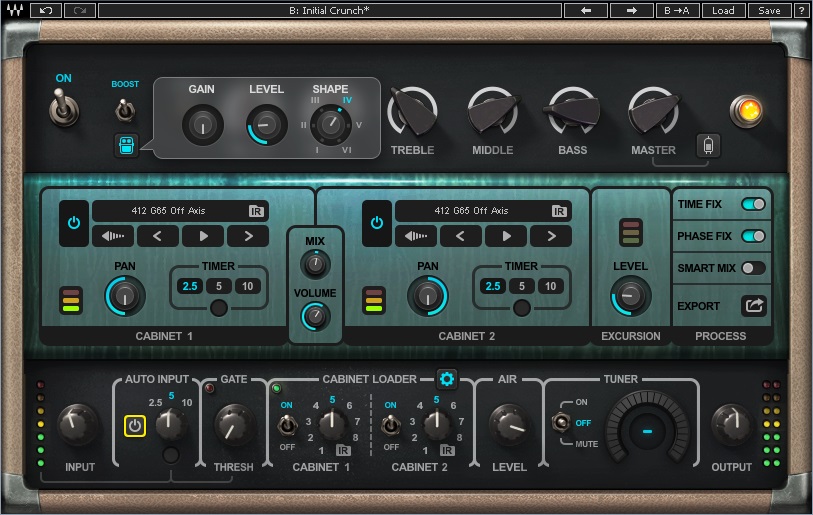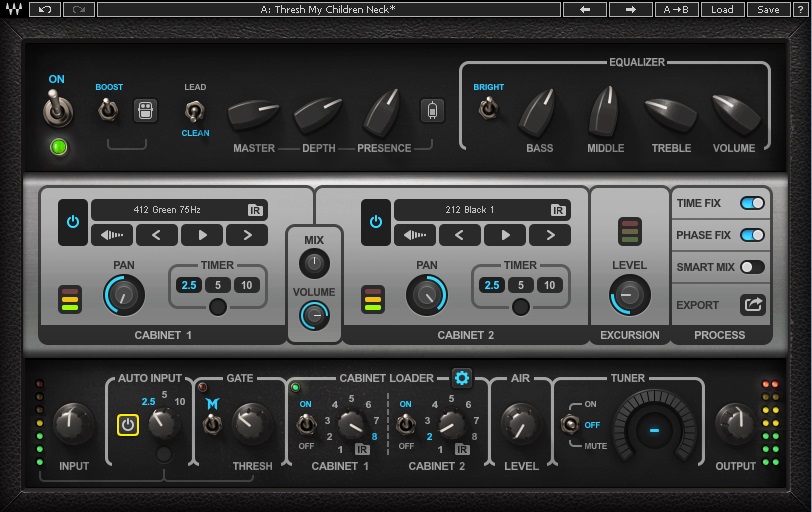Can amp sims feel like amps, not just sound like them?
The are plenty of amp sims these days…it’s not like we have a problem with choice! Although some guitarists still have no interest in digital re-creations of amps, as the quality of the emulations continues to improve, more guitar players are finding that sims not only do credible emulations of physical amps, but can provide many sounds that would be difficult, or even impossible, to create with physical devices.
Futhermore, people often say that once an amp sim is recorded, you can’t tell the difference between “the real thing” and the sim. And I agree. But playing is something else, because while amp sims are very good at sounding like physical amps, where many of them fall short is they don’t respond like physical amps. And having said that, I’m sure the first reaction of many people will be “No sim will ever be able to re-create the responsiveness of a physical amp.”
Well, you can get demo versions of the PRS SuperModels after creating an account, and decide for yourself. As for me, hen the PRS SuperModel amps collection first appeared, after 10 minutes of playing with the demo I bought the collection. I was so impressed by how all three amps responded to nuance, and the way they transitioned—smoothly and convincingly—from clean to crunch, I was hooked. I felt like I was playing through a PRS amp.
Now, understand that these are amp replacements. There are no pedals, wahs, delays, choruses, nothing extra other than a reverb on the Dallas model. Instead of doing lots of things well, the SuperModels do one thing superbly—feel and play like an amp. These sims are not pedalboard emulations.
Okay, that’s enough waxing poetic over how much I love these plug-ins. Each amp has three sections: an upper section that duplicates the PRS amp being modeled; these differ somewhat for the various amps. The other two sections are identical for each amp. The middle section is where you get to go nuts with the cabinet IRs, while a lower section does the homework—input and output levels, gate, cabinet loader, air control for some ambiance, and tuner.

Let’s dispense with the lower section first. The cool thing here is the input Learn control, à la Guitar Rig. If someone ran for president on the platform that a law would be passed requiring all amp sims to have a learn function, I would vote for that person regardless of party or ideology. Levels are crucial to getting the right sound out of amp sims, and there’s no excuse for getting it wrong with these suckers.
The cabinet loader section is basically the Cliff’s Notes version of the middle section—you can load different cabinets without opening up the middle’s innards. The Air control adds ambiance, which is something I consider important to give the right feel of amp-in-a-room.
The middle section gives extensive control over the IRs. There are eight cabs available in all the amps, but you can load your own IRs, or export new ones based on what you do in the middle section. And…you can cycle through the IRs while playing, so you can hear the sounds in context. Of course, you can pan, and alter the balance, of the cabs. There are also Phase Fix and Time Fix buttons to compensate for inconsistencies among loaded IRs.
The top sections have some elements in common: a bypass switch so you can use just the cabs, a tone stack (but the details vary among the amps), boost section with pop-up controls for gain, level, and six tonal “shapes,” and a power amp section with pop-up controls for bias, sag, and sag speed, along with indicators that show how much the output transformer is being stressed, and the amount of sag. These are effective controls in tailoring the feel to your playing. The Blue Sierra and Dallas amps have Bright switches, while the Archon has a Lead/Clean switch.
As to character, for the Dallas amp, think Fendery clean, with the option to go further. It does credible crunch, but can also do the chimey/sparkle thing. I don’t know if Waves did this just to confuse all the people who say amp sims can’t do clean sounds…but it can do clean sounds. As with most of the amps, I favored the presets labeled “PRS” because either they worked “out of the box,” or were good points of departure that were tweaked easily into what I wanted.

The Blue Sierra V9 is excellent for rock crunch, and creates beautiful lead tones.After adjusting the input level and loading the “Initial Lead” preset, I fell in love with it—this is a lead sound that sings. The Boost and tone stack controls are particularly effective with this amp, as is the Gain Stage; its on/off switch is very much like a cleaner/dirtier switch. The amount of tonal change you can get with this collection of controls is huge, from corpulent to tight and controlled. If I could have only one of the SuperModels, this would be it.

Archon is schizophrenic—it can produce superb clean, sparkly sounds, but you can also crank up the gain to go deep into modern metal-land. Oh, and speaking of cranking, it appears there’s a lot going on under the hood because with several controls, it takes a second after making an adjustment before you hear the change (and you might hear some sci-fi sounds while it’s changing). With Archon I actually like dialing back about 10-20% from maximum overdrive, but Archon can hold its own when you want high gain.
Now, I haven’t tried every amp sim in the world (despite my best efforts to do so), but my initial opinion of the PRS SuperModels that made me reach for my credit card within minutes of first trying them remains: you feel like you’re playing through a PRS amp. For my taste, this is an astounding collection. If you think I’m going over the top…well, try the demo, and see what you think.
